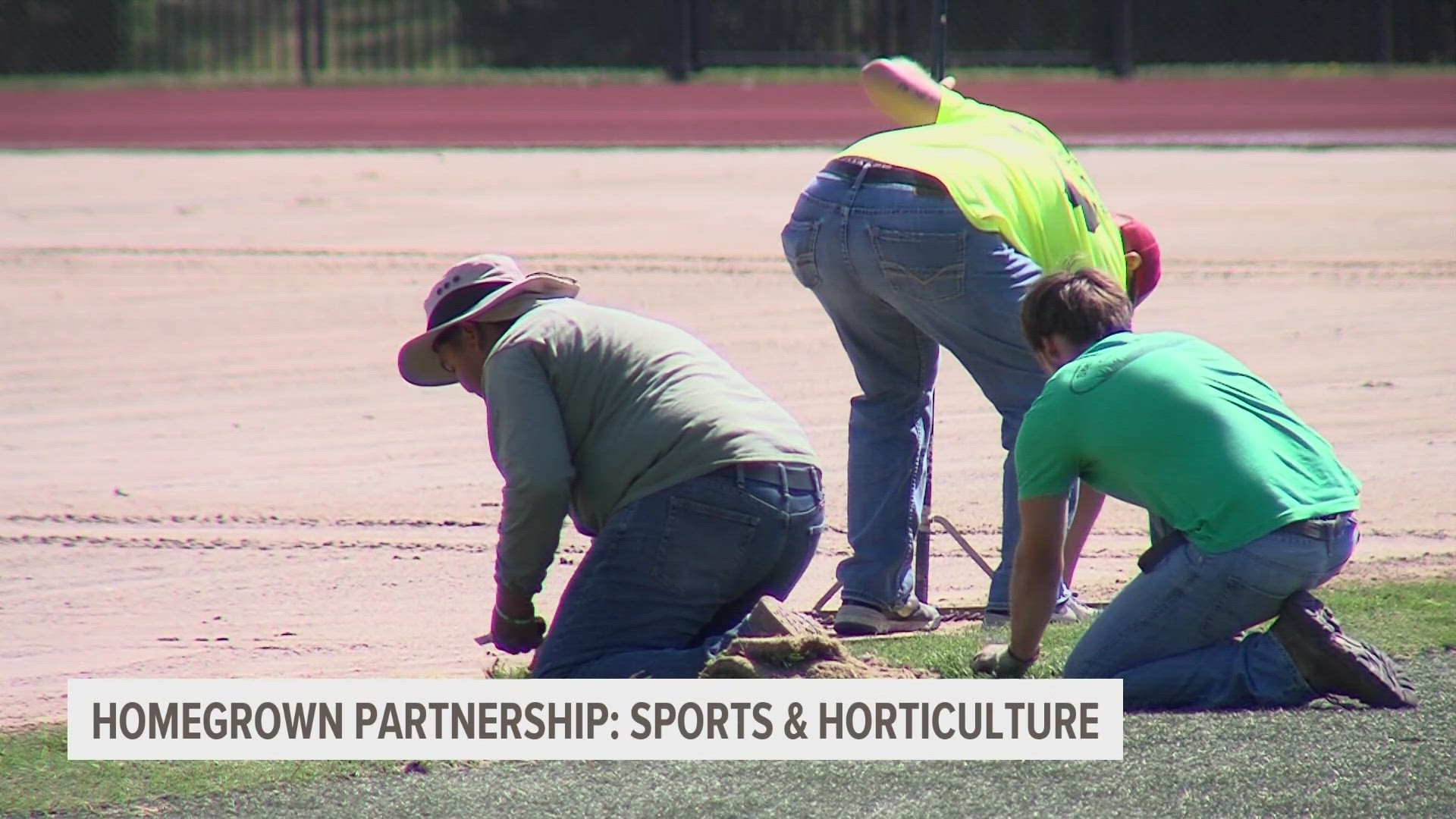AMES, Iowa — In their latest collaboration, the Iowa State athletic and horticulture departments are replacing the synthetic turf on the Iowa State soccer field with natural grass.
The unique thing about this new grass is that it was grown on a sod farm at the Iowa State Horticulture Research Station, just north of Ames.
This homegrown collaboration between the two departments began back in 2020 when the field at Jack Trice Stadium was due for an upgrade.
"It needed to replaced," said associate professor and turf grass extension specialist Adam Thoms. "It had been 12 years, I think, at that time, and so the field manager at the time talked me into partnering together and growing it out here at the research station."
When choosing what grass to grow, there were several variables they took into consideration.
"We look at varieties out here of grasses and say alright, these are more drought tolerant, more traffic tolerant," Thoms said. "So, we kind of picked the most traffic tolerance as well as a dark green color that would look good on the field, and then we wanted something that greened up quickly in the spring."
They ended up going with Kentucky bluegrass, which is pretty popular for golf courses and sports fields.
"It's much easier on athletes' bodies," said Iowa State manager of turf, grounds and custodial operations, Joe Hill. "It's easier on people that are standing on it and around it. Today's a perfect example of a day it's going to be 90 degrees. Synthetic turf would be somewhere in the 160 to 180 degrees to stand on, where natural grass is going to be 80 or 90 degrees, so it's much cooler."
The trend of transitioning from synthetic to a natural playing surface had been growing long before this project even began.
"You look at the highest level and the FIFA World Cup, they will only play, the men's will, on natural grass," Thoms said. "NFL players also see the safety data, so they're starting to request only natural grass fields."
The longevity of natural turf field is another big selling point. If maintained correctly, it can last decades.
The first batch of Iowa State's homegrown turf was installed at Jack Trice Stadium in May of 2022 and was ready to go by fall for football season.
It was considered a success for both the athletics and horticulture departments.
"We used it as a great outdoor lab and learning opportunity," Thoms said. "That project worked out, so we regraded the area and seeded it and grew in the soccer field."
Thanks to the partnership between the two departments, players will have a new and improved natural playing field waiting for them once soccer season begins.
"If they're thinking about the field when they're playing on it, then their head's in the wrong place," Hill said. "It means that we haven't done our job. So, we take a tremendous amount of pride in giving all of our athletes a world class surface."

